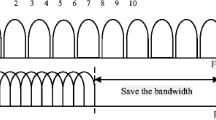Orthogonal frequency division multiplexing (OFDM) has been applied in the current wireless local-area networks and digital video broadcasting since it is robust against the frequency-selective channels. However, there is still a crucial intercarrier-interference (ICI) problem due to Doppler effect, local frequency drift and sampling clock offset, associated with OFDM systems. Recently ICI self-cancellation schemes have been proposed to significantly reduce the ICI and empirically they greatly outperform the convolutional coding schemes adopted by the IEEE 802.11 standard. However, all existing ICI self-cancellation receivers are still sensitive to the phase and amplitude ambiguities due to the phase offset, the local oscillator frequency drift and the multipath reflections. Therefore, in this paper, a novel receiver design integrating the ICI self-cancellation with a proposed dynamic phase and amplitude estimation mechanism is introduced, which can well solve the ambiguity problem. The Monte Carlo simulation results show that our phase and amplitude estimators can greatly decrease the error probability for the final symbol detection in the ICI self-cancellation OFDM receivers.





Similar content being viewed by others
References
R. V. Nee and R. Prasad, OFDM for Wireless Multimedia Communications, Artech House Publisher, 2000.
2. Cimini L. (July 1985) “Analysis and simulation of a digital mobile channel using orthogonal frequency division multiplexing,”. IEEE Transactions on Communications. COM-33(7): 665–675
3. Yang B., Letaief K. B., Cheng R. Cao Z. (July 2001) “Channel Estimation for OFDM transmission in multipath fading channels based on parametric channel modeling,”. IEEE Transactions on Communications. 49(3): 467–479
4. Zhou S., Giannakis G. (August 2001) “Finite-alphabet based channel estimation for OFDM and related multicarrier systems,”. IEEE Transactions on Communications. 49:(8)1402–1414
5. Armstrong J. (March 1999) “Analysis of new and existing methods of reducing intercarrier interference due to carrier frequency offset in OFDM,”. IEEE Transactions on Communications. 47(3): 365–369
6. Seaton K.A. and Armstrong J. (January 2000) “Polynomial cancellation coding and finite differences,”. IEEE Transactions on Information Theory. 46(1): 311–313
J. Armstrong, P. M. Grant, and G. Povey, Polynomial cancellation coding and finite differences, Proceedings of the IEEE GLOBECOM, pp. 2771–2776, Nov. 1998
8. Zhao Y., Haggman S. (July 2001) “Intercarrier interference self-cancellation scheme for OFDM mobile communication systems,”. IEEE Transactions on Communications. 49(7):1185–1191
9. Piazzo L., Mandarini P. (October 2002) “Analysis of phase noise effects in OFDM modems,". IEEE Transactions on Communications. 50(10): 1696–1705
10. Shentu J., Panta K., and Armstrong J. (June 2003) “Effects of phase noise on performance of OFDM systems using an ICI cancellation scheme,”. IEEE Transactions on Broadcasting. 49(2): 221–224
11. Gholami M. R., Nader-Esfahani S., Eftekhar A. A. (2003) “A new method of phase noise compensation in OFDM,”. Proceeding of International Conference on Communications. 5:3443–3446
12. Onizawa T., Mizoguchi M., Sakata T. and Morikura M. (May 2002) “A new simple adaptive phase tracking scheme employing phase noise estimation for OFDM signals,”. Proceeding of IEEE Vehicular Technology Conference 3:1252–1256
13. Casas R.A., Biracree S.L. and Youtz A.E. (September 2002) “Time domain phase noise correction for OFDM signals,”. IEEE Transactions on Broadcasting 48(3): 230–236
14. Wu S. and Bar-Ness Y. (December 2002) “A phase noise suppression algorithm for OFDM-based WLANs,”. IEEE Communications Letters 6(12):535–537
15. Abhayawardhana V.S. and Wassell I.J. (November 2002) “Common phase error correction with feedback for OFDM in wireless communication,”. Proceedings of IEEE Global Telecommunications Conference 1: 651–655
16. Nikitopoulos K. and Polydoros A. (November 2001) “Compensation schemes for phase noise and residual frequency offset in OFDM systems,”. Proceedings of IEEE Global Telecommunications Conference 1: 330–333
17. Rappaport T.R. (2002) Wireless Communications. Prentice-Hall, New Jersey
18. Wu H.-C. and Gu G. (December 2003) “Analysis of intercarrier and interblock interferences in wireless OFDM systems,”. Proceedings of IEEE Globecom Conference 2: 784–788
19. Micheli-Tzanakou E. (1999) Supervised and Unsupervised Pattern Recognition. CRC Press, Boca Raton, Florida
20. Molisch A. F. (2001) Wideband Wireless Communications. Prentice-Hall, New York
Author information
Authors and Affiliations
Corresponding author
Rights and permissions
About this article
Cite this article
Wu, HC., Huang, X. Robust ICI Self-cancellation OFDM Receiver with Dynamic Phase and Amplitude Estimations. Int J Wireless Inf Networks 12, 169–177 (2005). https://doi.org/10.1007/s10776-005-0001-2
Published:
Issue Date:
DOI: https://doi.org/10.1007/s10776-005-0001-2




